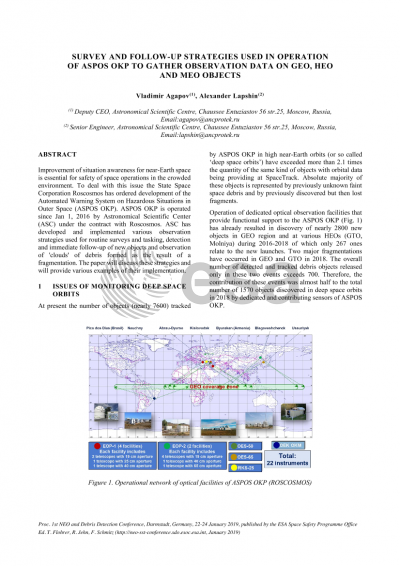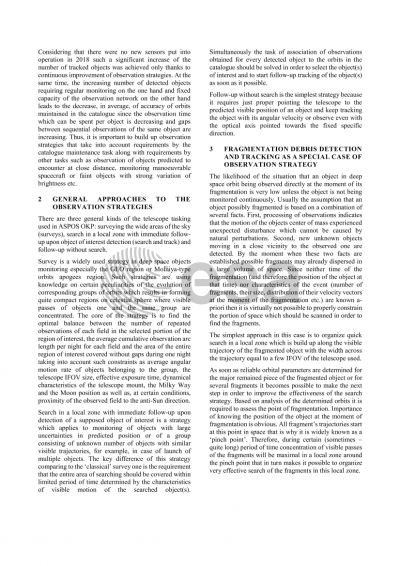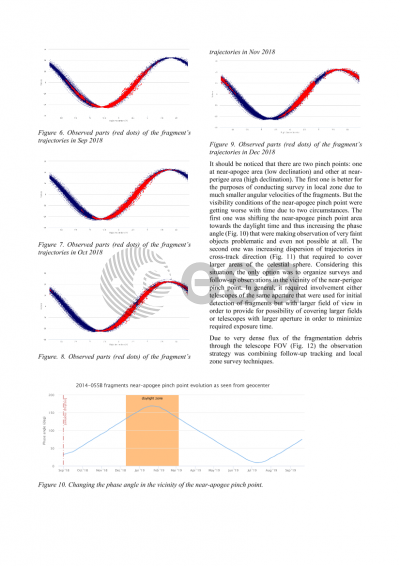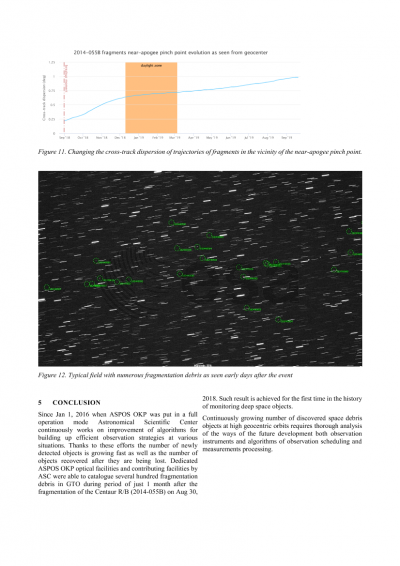Document details

Abstract
Improvement of situation awareness for near-Earth space is essential for safety of space operations in the crowded environment. To deal with this issue the State Space Corporation Roscosmos has developed the Automated Warning System on Hazardous Situations in Outer Space (ASPOS OKP). ASPOS OKP is operated by Astronomical Scientific Center (ASC) under the contract with Roscosmos. Operation of dedicated optical observation facilities that provide functional support to the ASPOS OKP has already resulted in discovery of hundreds of objects in GEO region and at various HEOs (GTO, Molniya) during 2016-2018. At present number of objects tracked by ASPOS OKP in these orbits have exceeded quantity of objects with orbital data provided at SpaceTrack by more than 2000. Absolute majority of these objects is represented by previously unknown faint space debris and by previously discovered but then lost fragments. Two major fragmentations have occurred in GEO and GTO in 2018. The overall number of debris objects released only in these two events and tracked by ASPOS OKP exceeds 700. ASC has developed and implemented various observation strategies used for routine surveys and tasking, detection and immediate follow-up of new objects and observation of 'clouds' of debris formed as a result of a fragmentation. The paper will discuss these startegies and will provide various examples of their implementation.
Preview







